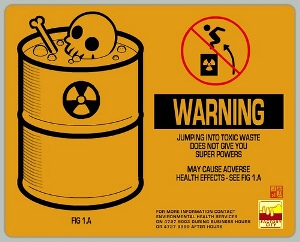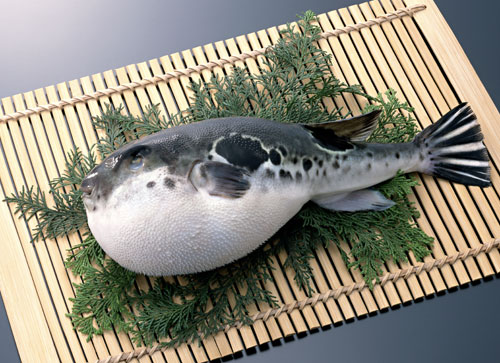 Obviously, the meaning of toxicology is the study of
poisons. The etymology is quite deep rooted because it came from the Latin word
“toxicus” which means poisonous and
that Latin word was derived from the Greek word “toxikón”, a
poison where arrowheads are dipped and used as an extra lethal weapon. Talk
about Toxiception.
Obviously, the meaning of toxicology is the study of
poisons. The etymology is quite deep rooted because it came from the Latin word
“toxicus” which means poisonous and
that Latin word was derived from the Greek word “toxikón”, a
poison where arrowheads are dipped and used as an extra lethal weapon. Talk
about Toxiception.
It’s a broad study wherein everything
about toxic substances, from its composition and nature to the means by which
these substances cause ill effects to not only humans but also other living
organisms and its consequential effect on biologic systems, are meticulously
studied in full detail.
 It clarifies our orthodox understanding
that poisons are substances that cause immediate harm or fatality when ingested
but in fact not all toxic substances causes immediate effects in our body,
sometimes it needs time before it manifests itself as being harmful. That’s why
toxicology goes beyond mere basic concepts of toxicity because it also assesses
the quantitative relationship between the ill effects to the concentration or
dosage of the substances, duration and frequency of exposure of the organisms.
It clarifies our orthodox understanding
that poisons are substances that cause immediate harm or fatality when ingested
but in fact not all toxic substances causes immediate effects in our body,
sometimes it needs time before it manifests itself as being harmful. That’s why
toxicology goes beyond mere basic concepts of toxicity because it also assesses
the quantitative relationship between the ill effects to the concentration or
dosage of the substances, duration and frequency of exposure of the organisms.
Toxicology’s wide ranging character brought about the rise of different
branches and sub disciplines that would tackle each parameter of toxicology in
a comprehensive manner though there may be interdisciplinary relations within
each of the branches.
Discipline
|
Definition and Application
|
Descriptive
Toxicology
|
Focuses on toxicity
testing of chemicals or agents of toxicity, usually on animals and then correlated
to human conditions. It provides dose-response information upon exposure to a
harmful toxic agent.
|
Mechanistic
Toxicology
|
Focuses
on the in depth study of how the agent initiates its biochemical or
physiologic effect on the organism whether it
would be genotoxic, teratogenic, mutagenic or carcinogenic. Works as toxicokinetics and
toxicodynamics.
|
Regulatory
Toxicology
|
Focuses on risk assessment and exposure guideline development from
gathered information obtained from toxicity testing. Establishes standards
for safe exposure in occupational health guideline or governmental
regulations to limit the use.
|
Forensic
Toxicology
|
Focuses
on the medical and legal implications of drugs, as in the cases of illegal
drug use/abuse, overdose and testing, and poisons, as in the case of murders
and homicides that is of importance to police and medical examiners.
|
Clinical
Toxicology
|
Focuses on pathophysiology of toxicity in both chronic or acute
exposure and treatment to ameliorate signs and symptoms exhibited by the
toxic agent. This is also in conjunction with use of pharmaceutical drugs.
|
Environmental Toxicology
|
Focuses
on the exposure of the chemical varieties of toxicants found in the general
living environment and its implications on organisms, mostly on the nonhuman
population.
|
Ecotoxicology
|
Specialized area of environmental toxicology focusing mainly on the
impacts of toxic agents in the population and its dynamics within an
ecosystem and its fate.
|
The
use of the concepts of toxicology started during the primitive times.
One instance was the use of Curare, which is a black, resin-like toxic substance obtained from Strychos toxifera, that’s placed on arrow dart tips and were used to produce a more lethal and effective weaponry.
One instance was the use of Curare, which is a black, resin-like toxic substance obtained from Strychos toxifera, that’s placed on arrow dart tips and were used to produce a more lethal and effective weaponry.
During the Roman Empire, political assassinations
by poisoning were rampant. The paranoid King Mithridates VI of Pontus (120-63
BCE) consumed daily small amounts of poisons, consisting of 36 different
ingredients, serially increasing to gain polyvalent tolerance or immunity from
different low grade poisons given by attempting poisoners. It was effective
enough that he didn’t die of his own attempt of suicide by poison and had to
use his sword to do the job. It led to the foundation of Mithridatium which is a concoction containing a collection of materials to prevent poisoning.
It led to the formation of the first law against poisoning, Lex Cornelia, circa 82 B.C.
 |
| Catherine de Medici |
In the middle ages, clinical trials of toxic concoctions were used on the sick, the poor and on orphans by Catherine de Medici, Marchioness do Brinvillers and Catherine Deshayes carefully noting onset of action, potency, specificity and site of action and clinical signs and symptoms.
 |
| Paracelsus |
Evolution
of toxicology honed and polished our know-abouts on the use of chemicals, drugs
and other agents that may pose diminishing effects on our health.
Fast Fact: Edible Poison
 |
| Delectable FUGU |
References:
- History of toxicology. Published: August 24, 2008, 3:59 pm. Updated: August 24, 2008, 3:59 pm. Lead Author: Emily Monosson.
- Principles of Toxicology. History of Toxicology. Michael J. Hooper. The Environmental Toxicology Department. Texas Tech University. Lubbock, Texas.
- Lu’s Basic Toxicology: Fundamentals, Target Organs, and Risk Assessment. 5th ed. Frank C. Lu. 2009. Informa Healthcare USA, Inc.
- Principles of toxicology: Environmental and Industrial Applications. 2nd ed. 2000. Phillip L. Williams. John Wiley & Sons, Inc.
- Principles and Practice of Toxicology in Public Health. Ira S. Richards. 2008. Jones and Bartlett Publishers.
- Clinical Chemistry: Techniques, Principles, Correlations. 6th ed. Michael L. Bishop. 2010. Lippincott Williams & Wilkins.
- http://www.minelinks.com/ecuador/hunting_2.html
- http://www.pharmacy.wsu.edu/History/history06.html
- http://zazagelato.blogspot.com/2012/05/thank-queen-for-gelato.html
- http://ancienthistory.about.com/b/2010/03/18/thursdays-term-to-learn-lex-cornelia-de-sicariis-et-veneficiis.htm
- http://www.all-about-forensic-science.com/forensic-toxicology-phd-topic.html
- http://www.forbes.com/sites/eco-nomics/2012/01/23/how-toxic-is-your-office-space/



Your way of making the topic more interesting is greatly appreciated and by all means crafty. Some misunderstandings regarding the effects of the poisons/toxins were cleared and given a thorough explanation. Overall, the post is really good though I suggest that you change the font into something simpler because it is hard to read especially in paragraphs... Nonetheless, excellent work!
ReplyDelete